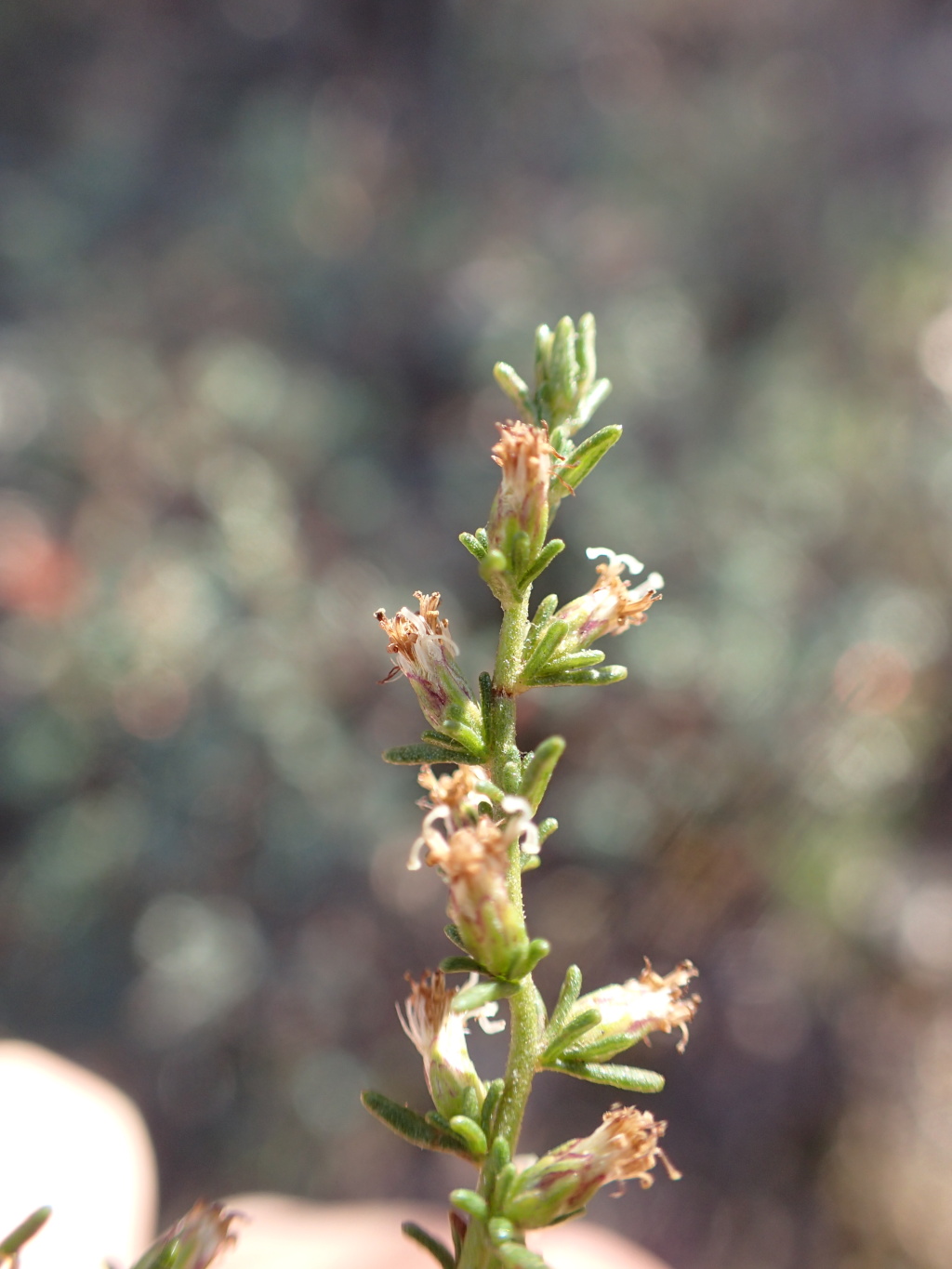Olearia tubuliflora
(Sond. & F.Muell.) Benth. Rayless Daisy-bushSlender, erect shrub to c. 2.5 m high; branchlets cottony-pubescent, usually sparsely glandular. Leaves alternate, sessile or subsessile, linear or narrowly elliptic or obovate, 2–8 mm long, 0.5–2 mm wide, obtuse; upper surface green, glabrous or pubescent, sometimes scabrous; lower surface greyish, cottony-pubescent, partly to largely obscured by the revolute margins. Capitula 2–3 mm diam., sessile, solitary in leaf-axils, crowded toward branch-tips; involucre conical, 1.7–2.5 mm long; bracts 2–3-seriate, graduating, obtuse to acute, sparsely to moderately pubescent, green, often purple-tipped. Ray florets 3–5, tube shorter than style, ligules not developed; disc florets 3–6, yellow, longer than involucre. Cypsela cylindric, 1–1.5 mm long, 6-ribbed, sparsely sericeous; pappus bristles whitish, c. 2 mm long. Flowers Sep.–Dec.
VVP, VRiv, GipP, OtP, Gold, CVU, GGr. Also SA, NSW. Scattered through north-central Victoria (e.g. Maryborough, Bendigo, Avoca districts) usually in box--ironbark forest on poor gravelly soils, with outlying occurrences in southern parts of the Brisbane Ranges and near Anglesea. A pre-1900 collection of this species was supposedly collected from Lakes Entrance, but it is questionable whether this location is accurate.
Walsh, N.G.; Lander, N.S. (1999). Olearia. In: Walsh, N.G.; Entwisle, T.J., Flora of Victoria Vol. 4, Cornaceae to Asteraceae, pp. 886–912. Inkata Press, Melbourne.
 Spinning
Spinning
